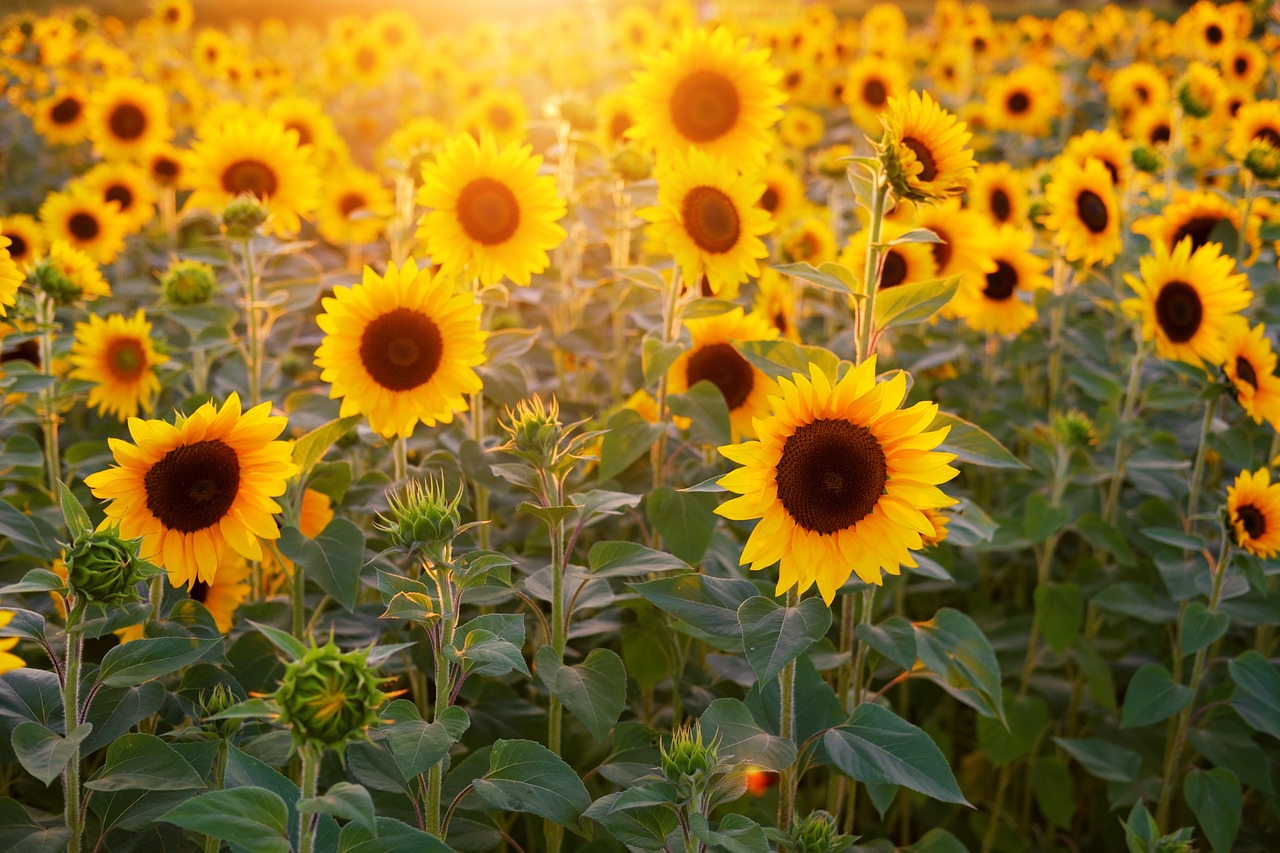Table of Contents
Few flowers can rival the sunflower’s stunning beauty and imposing size. Gardeners, interior designers, and chefs adore these big, vibrant blossoms for their adaptability and beauty. Sunflowers, however, provide a variety of advantages in addition to their aesthetic appeal, such as luring pollinators and producing delectable snacks. Growing sunflowers is a gratifying and joyful activity, regardless of your skill level in gardening.
We’ll cover all you need to know about growing these lovely blooms in this extensive guide, from the finest planting methods to the perfect growth environments. So, let’s explore the sunflower world together! Along with the numerous applications for sunflowers in food preparation and interior design, we’ll also discuss their intriguing history, symbolism, and significance. So let’s begin and explore the land of sunflowers together!
Benefits of Growing Sunflowers
There are many reasons to grow sunflowers, from their striking beauty to their numerous practical uses. Here are just a few of the benefits of cultivating these stunning flowers:
1. Attracting Pollinators
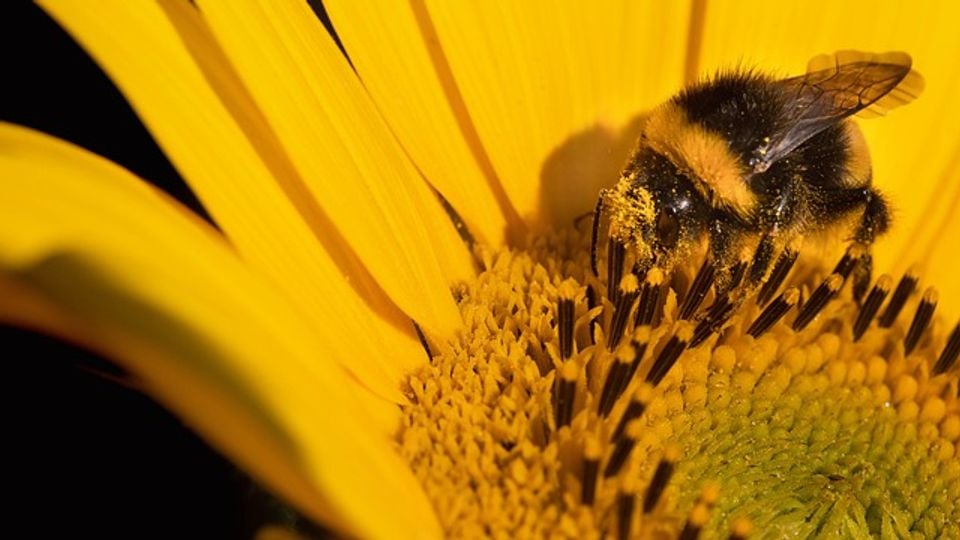
Bees, butterflies, and other pollinators love sunflowers. Insects can easily find and reach the nectar and pollen of the sunflower thanks to its brilliant yellow petals and huge centre disc. By including sunflowers in your garden, you not only make your garden beautiful but also promote a sustainable population of pollinators such as bees and butterflies.
2. Providing Food for Wildlife
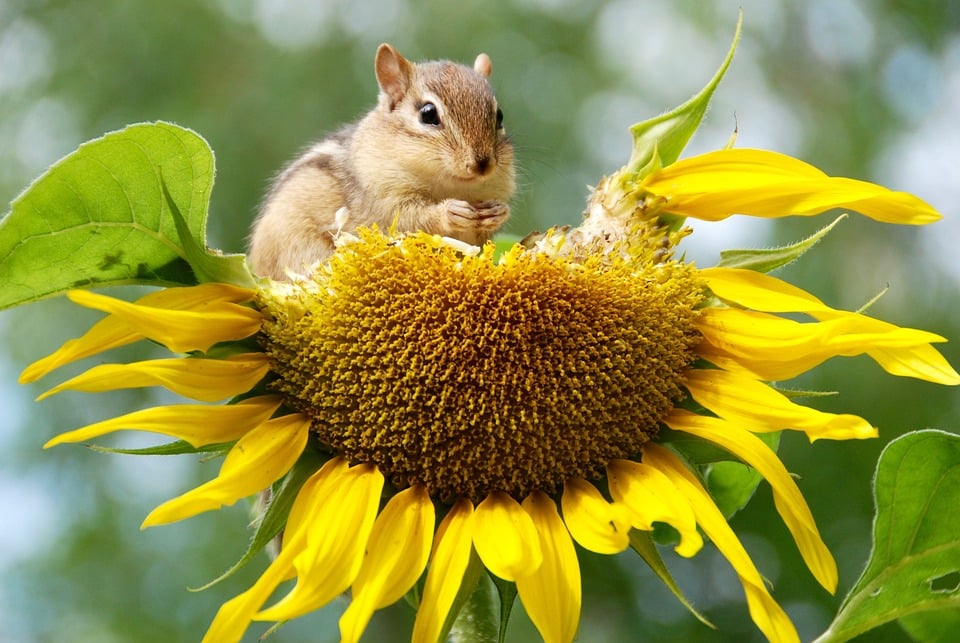
Apart from looking attractive, sunflowers also serve a practical purpose, unlike many flowers. Did you know you can help out these furry friends by leaving some sunflower heads outside during the colder months? You might not know that this small gesture can be a vital food supply and nourishment when needed. This small gesture from your side can bring a change and help out hundreds of needy creatures in your vicinity.
3. Producing Tasty and Nutritious Seeds
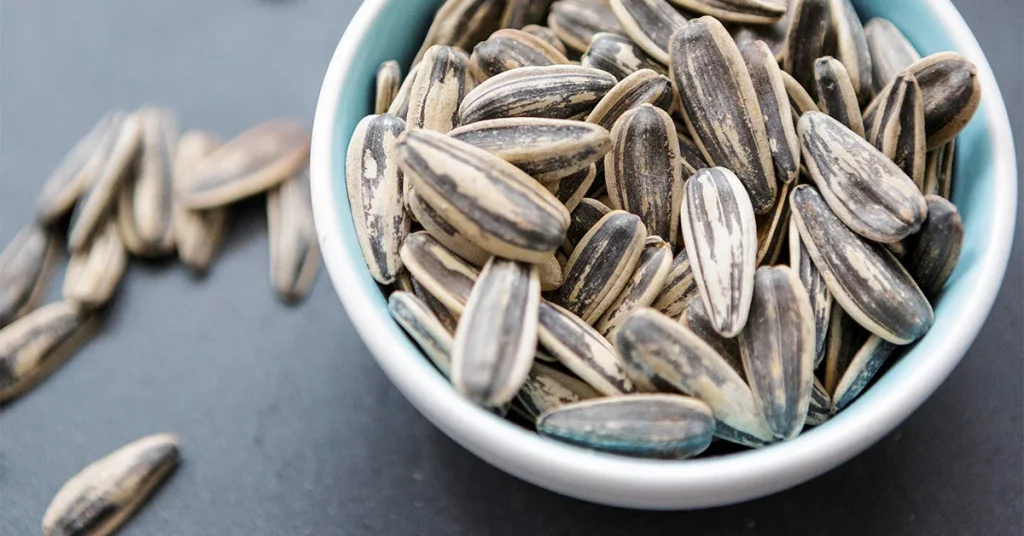
Sunflower seeds are a beloved snack worldwide. They found their place in Asian cooking millennia ago and have been used in Western cooking for decades. Their use is diverse and varied, from using sunflower oils for frying and pickling to incorporating sunflower seeds in salads. They are also a great protein, fibre, and healthy fats source.
Types of Sunflowers
There are many different sunflowers, each with unique characteristics and uses. Here are a few of the most common types of sunflowers you may encounter:
1. Common Sunflower (Helianthus Annuus)
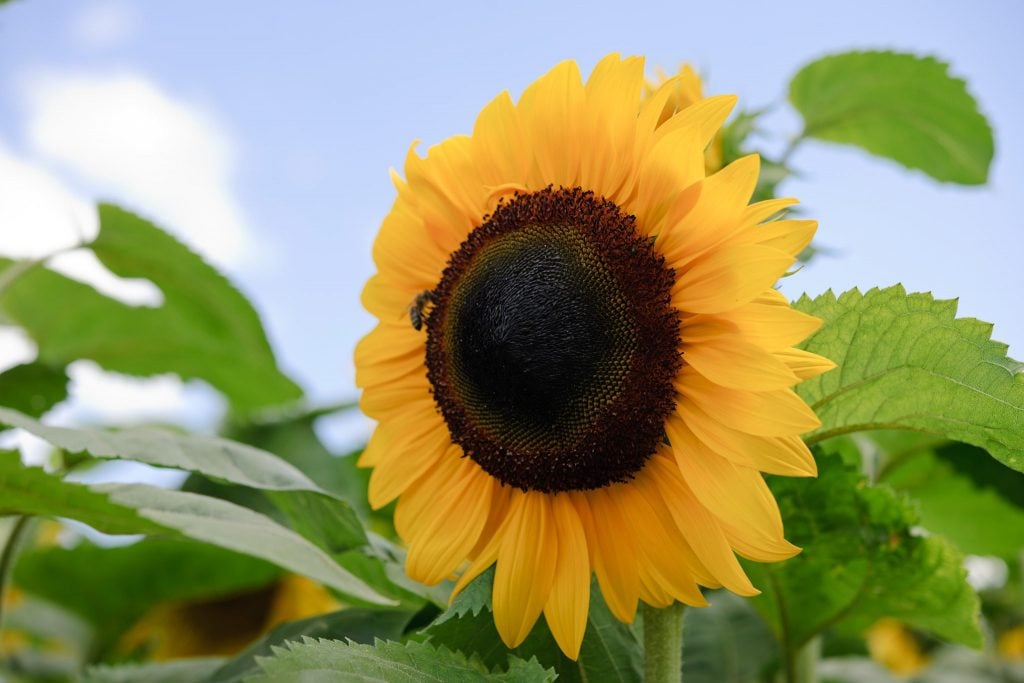
This is the most popular and extensively grown variety of sunflowers and the face of sunflowers worldwide. It can reach a height of 12 feet and produces big, dark-centred blooms. They are mostly used as party decorations, livestock feed, and oil used in cooking.
2. Dwarf Sunflower (Helianthus Annuus “Teddy Bear”)
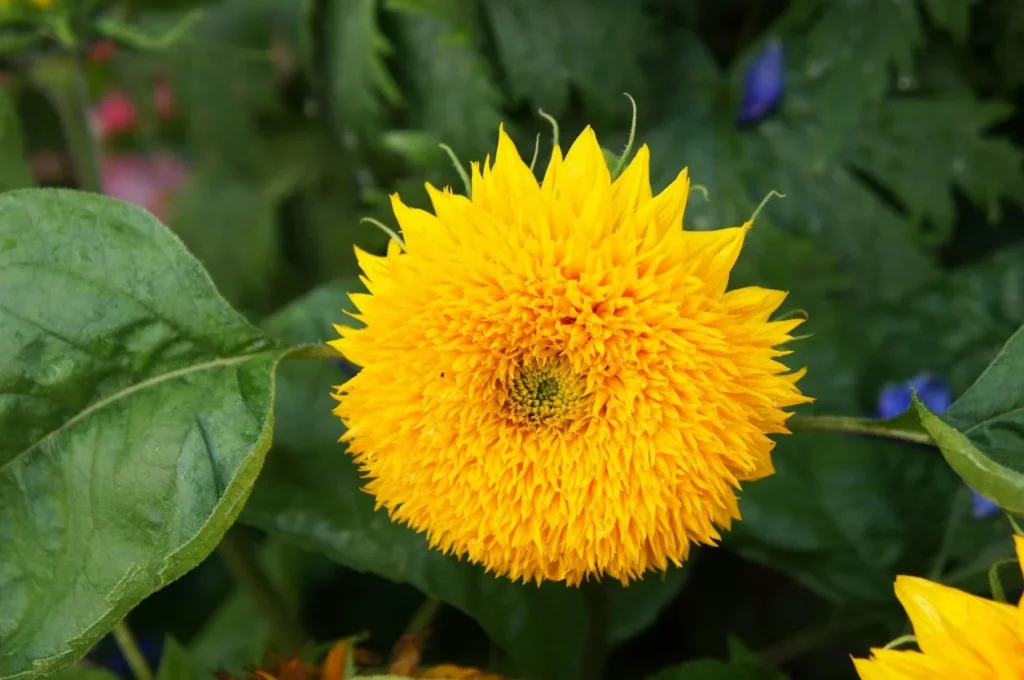
As the name suggests, dwarf sunflowers are a smaller breed of sunflowers and almost unrecognizable compared to most other sunflowers on this list. They typically grow up to a height of 12 to 24 inches. The flowers they produce are known for their bright colours, including yellow, red, and brown, giving them a distinct colour and making their fluffy texture distinguishable.
3. Giant Sunflower (Helianthus Annuus “Russian Mammoth”)
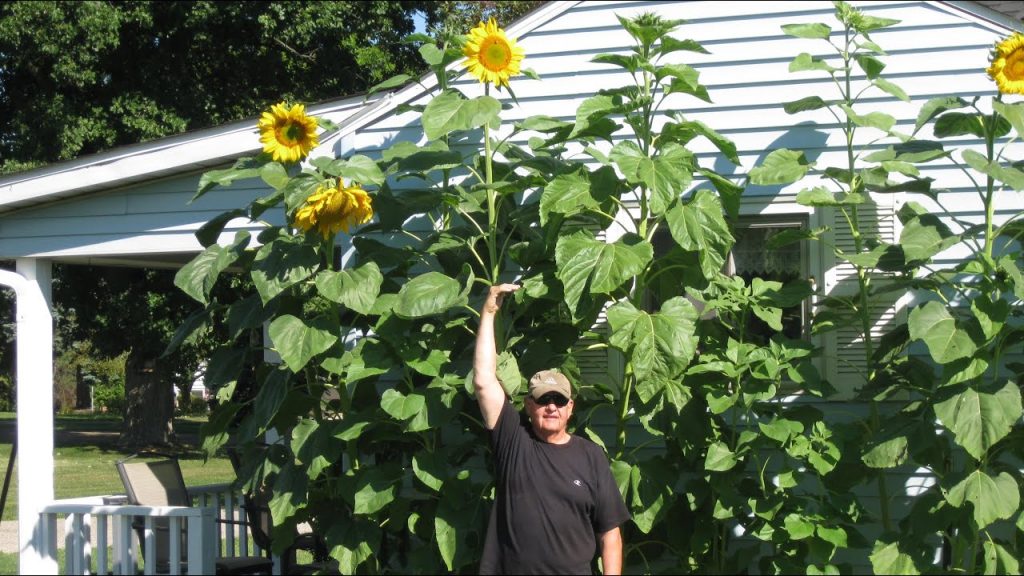
This variety of sunflowers, true to its name, is known for its enormous size and equally large flowers, which grow up to 1 foot. What makes this truly special is that it is an heirloom breed, meaning they haven’t been genetically modified. Native to North America, it has been cultivated for generations by native tribes for oil and food
4. Red Sunflower (Helianthus Annuus “Italian White”)
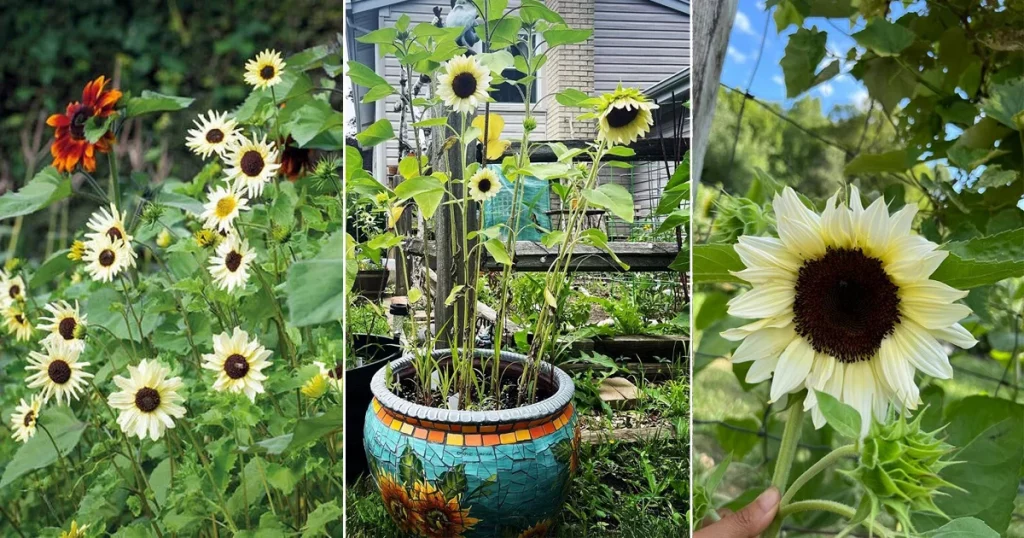
While most sunflowers are imagined to be yellow, some variants produce orange, brown, and bright red flowers. The White Italian sunflower, for example, has stunning creamish-white flowers with dark centres that make a striking statement in any garden.
Choosing the Right Sunflower Seeds
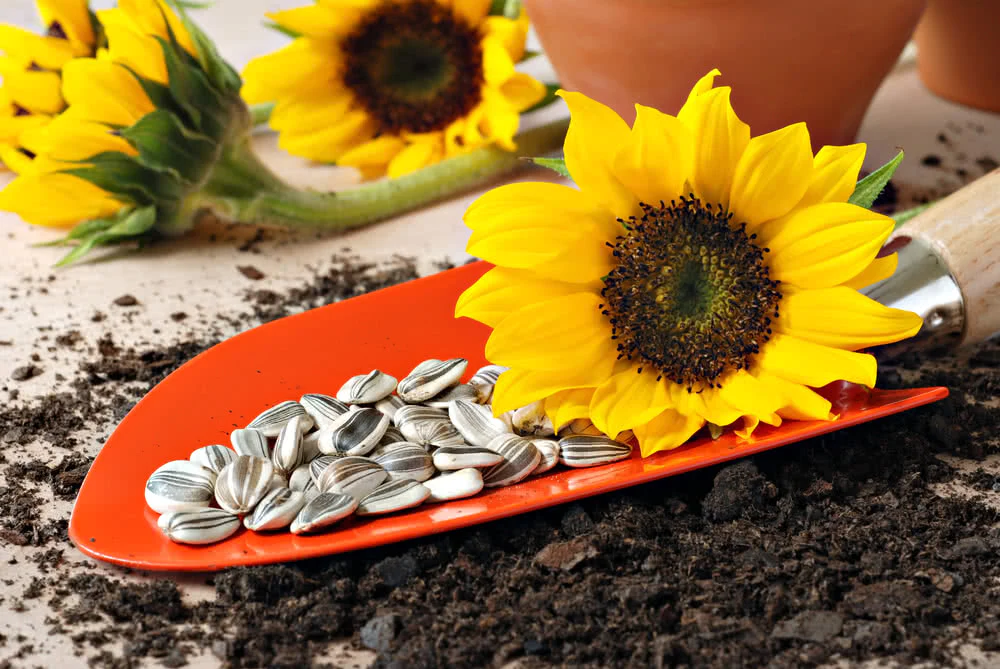
Choosing the right seeds determines if you will get the results you wish or not. Not all seeds can blossom in all weather conditions, so picking the sources that meet your requirements and complement your needs becomes necessary. Here are some suggestions for selecting the ideal sunflower seeds for your requirements:
1. Consider the Variety
There are dozens of varieties of sunflowers to choose from in the market, but what matters is the one that catches your eye. So first, consider why you want to grow sunflowers – do you want a tall eye-catching sunflower or one which doesn’t take up half of your space? Do you plan on harvesting seeds for eating or feeding birds? By keeping these things in mind, you can be sure that the sunflower you cultivate meets your needs.
2. Check the Seed Packet
When purchasing sunflower seeds, make sure you read the instructions written on the back of the packet. Information such as how deep you should sow the roots, the spacing you should provide between sources, and the number of days they mature are crucial for the successful growth of seeds into saplings and saplings into plants. This information can help you ensure that your sunflowers are planted correctly and have the best chance of thriving.
3. Look for High-Quality Seed
The health of the plant you grow depends on the quality of the seeds you use. This makes getting your seeds from reputable sources even more crucial since that dictates if your sunflowers grow strong and healthy enough to bloom into beautiful flowers. Ensure that the seeds you buy come in a sealed pack and are the right. Sometimes roots get mixed up, and you may receive the wrong sources.
Growing Sunflowers – Planting, Watering, and Caring for Your Plants
Now that you’ve selected the right seeds, it’s time to start growing your sunflowers. Here are the key steps for planting, watering, and caring for your sunflowers:
1. Planting Sunflowers
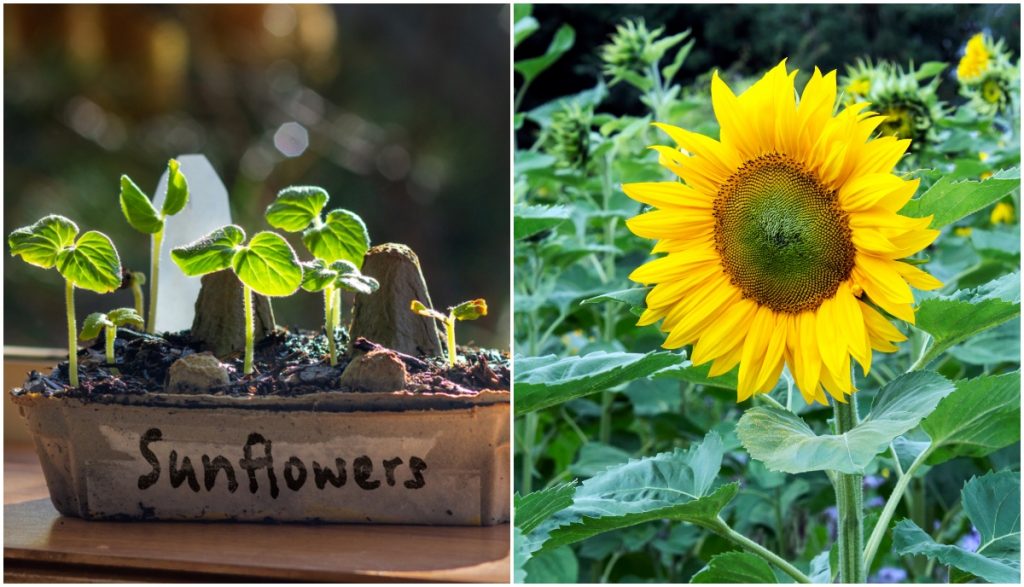
Sunflowers don’t take kindly to cold and, thus, are usually planted in the spring after the dangers of winter have passed. Sunflowers need at least 6-7 hours of direct sunlight and well-draining soil that doesn’t log water. Sow the seeds. You get around 2-3 inches into the ground and follow the instructions on how much spacing to provide.
2. Watering Sunflowers
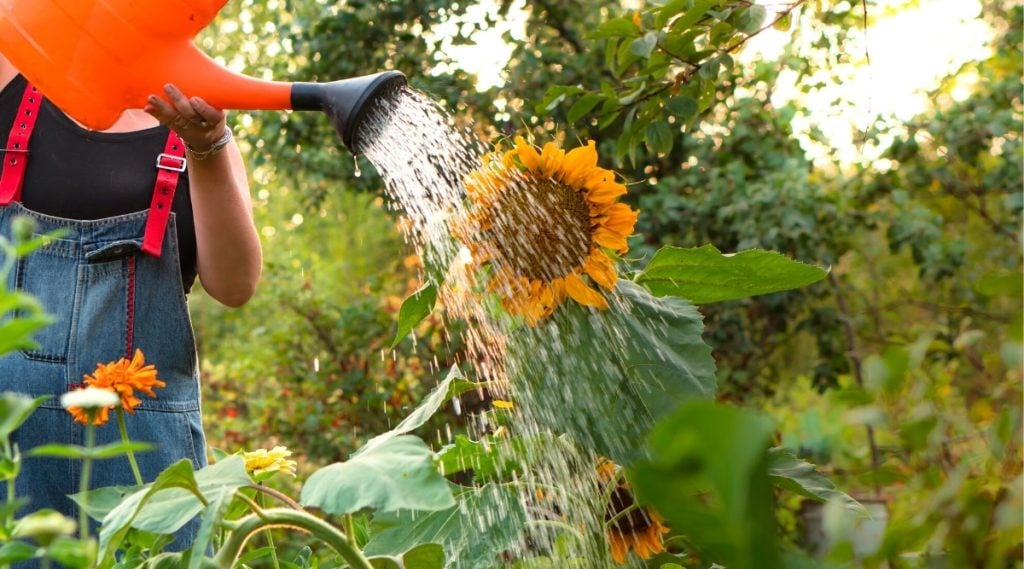
The type of climate sunflowers prefers also puts them at risk of water shortage, so to keep your sunflowers healthy, ensure that you water them deeply and right into the soil. It is also advised that some seasoned gardeners water their plants infrequently, encouraging their plant roots to look for deeper water in the ground, promoting root growth. Keep how much you water sunflowers in check, as overwatering can result in root rot.
3. Caring for Sunflowers
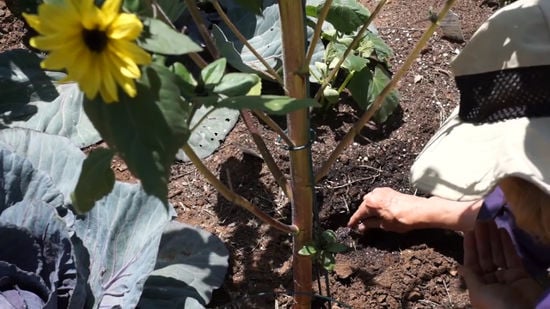
In addition to watering, sunflowers require regular care to grow strong and healthy. This may include fertilizing with a balanced fertilizer, pruning to encourage branching and prevent disease, and staking to support tall plants. It’s also important to monitor your plants and deal with any issues that arise quickly.
Common Sunflower Pests and Diseases
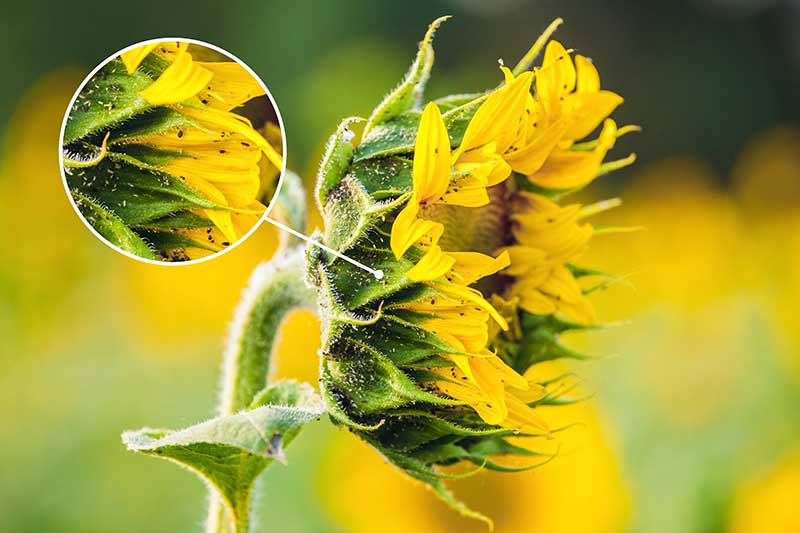
Like any other plant, sunflowers are vulnerable to several pests and diseases. Here are a few of the most common issues you may come across when growing sunflowers:
1. Aphids
Aphids are small pear-shaped insects that feed on sunflower sap. This can cause stunted product growth and transfer diseases to other plants.
Since ladybugs and lacewing insects are natural predators of Aphids, many farmers like to use them to protect their produce. You can also use insecticides or soap water to eliminate these pests.
2. Sunflower Moth
The sunflower moth is a common pest of sunflowers, especially in warm, humid areas. The larvae of this moth tunnel into the sunflower head, causing damage and reducing seed yield. To control sunflower moths, use pheromone traps or introduce natural predators like parasitic wasps. This will keep damaging pests in control and promote higher products.
3. Downy Mildew
Although it can affect sunflowers at any stage, this fungal disease most commonly affects younger vulnerable plants. If you notice the browning of your sunflower leaves, it may be a sign that your plant is affected. This fungal infection is most commonly carried by water and soil, and what makes your plant more vulnerable is overwatering, which weakens the roots. Remove any affected leaves and treat them with a fungicide if you notice these symptoms. Make sure the fungicide you use is made for sunflowers.
Harvesting Sunflowers – When and How to Collect Seeds and Flowers
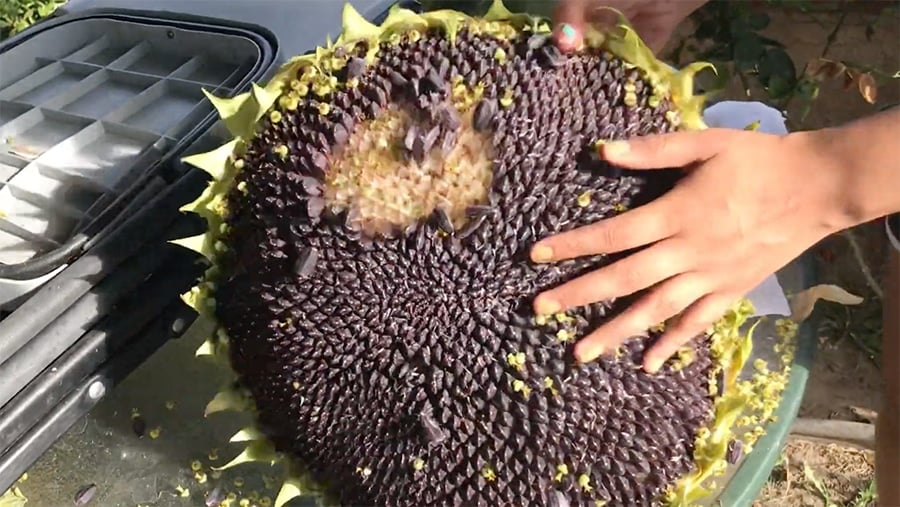
Once your sunflowers have blossomed, it’s time to harvest the seeds and flowers. Here are some steps you should follow to harvest sunflowers:
1. Harvesting Sunflower Seeds
Sunflower seeds are typically ready for harvesting once the flower heads have dried and turned brown. To harvest sunflower seeds, you first need to remove the flower head from the steam and dry it further. Once the sources have dried, if you don’t intend to use them immediately, keeping them in a dry and air-tight container is recommended.
2. Harvesting Sunflower Flowers
After they have fully blossomed and the petals have started to fall, sunflower heads can be collected. Insert the flower in a vase filled with fresh water after cutting the stem at an angle. Change the water in your sunflowers’ pots every few days and keep them away from heat sources and direct sunshine to extend their lives.
Preserving Sunflowers – Drying, Roasting, and Decorating with Sunflowers
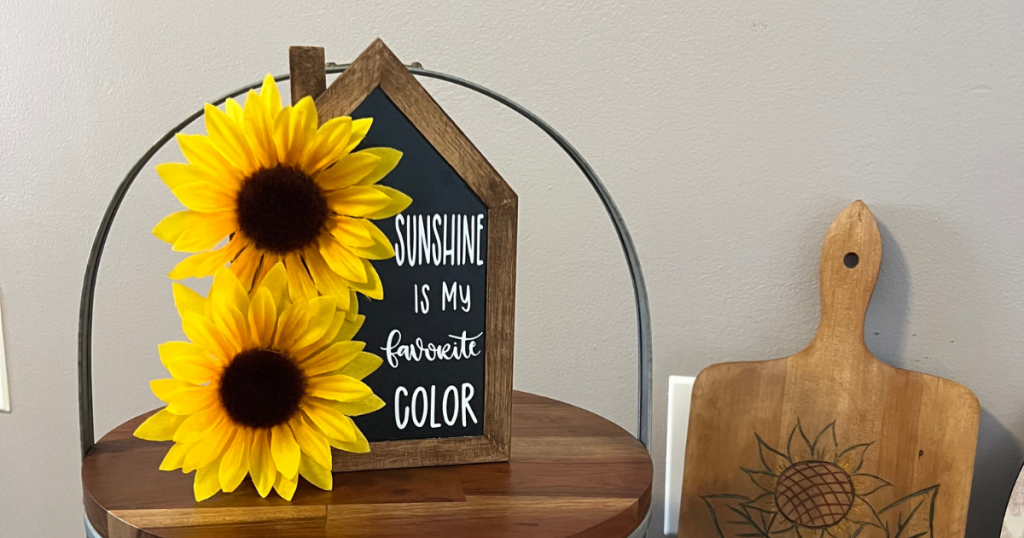
Sunflowers can be preserved in various ways, from drying and roasting seeds to using flowers in home decor. Here are a few ideas for keeping and using your sunflowers:
1. Drying Sunflower Heads
Drying sunflower heads for decoration can be a great and practical way to preserve any remaining sunflower heads for a long time. To dry your sunflower heads, hang them upside down in a cool, well-ventilated place until they are adequately dry. You can also use them in combination with other flowers, such as roses and carnations, which will add a vibrant look to your house
2. Roasting Sunflower Seeds
Sunflower seeds can serve as a nutrient-packed snack by themself or complement your salads with a crunch. Simply roast them in a cast iron pan or a baking oven, put them in an air-tight container, and use them whenever you like. You can also pack these seeds with your lunch and have them while studying or working.
3. Decorating with Sunflowers
Sunflowers look beautiful as table runners, wreaths, centrepieces, and other types of home decor. They also open up a whole new opportunity for your creative mind; think about mixing fresh flowers into your summer arrangements or adding dried sunflowers to your fall and winter decor. Sunflowers are also a lovely accent to bridal bouquets and other special occasions.
Sunflower Uses – Culinary, Medicinal, and Decorative
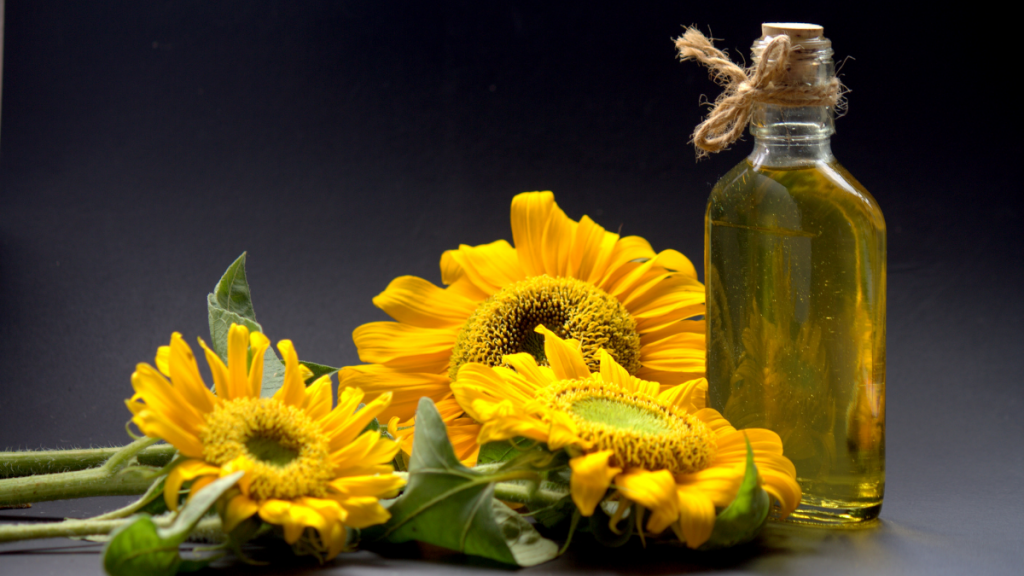
In addition to their beauty and practical uses, sunflowers have a range of culinary and medicinal applications. Here are a few examples:
1. Culinary
Everyone knows sunflower seeds are a great snack which complements salads and trail mixes perfectly. But did you know you can also make a spread similar to peanut butter? Ground the seeds and filter the hull for a perfect space on your toast or bread.
2. Medicinal Uses
Sunflower seeds have a long history of medicinal use in traditional and indigenous cultures. It is believed to help treat an extensive list of health issues. For example, its anti-inflammatory nature can benefit your body in mild fevers. Sunflower seeds are also useful for heart health, and their high fibre content is especially helpful for bowel movements.
3. Decorative Uses
As we’ve seen, sunflowers are a popular choice for home decor, from fresh flowers in vases to dried heads in wreaths and arrangements. They are also believed to symbolize positivity and happiness in many cultures, so sunflowers are often used for decoration in many marriages.
A Step Closer to Growing Beautiful Sunflowers
To summarise, there are many reasons to plant and grow sunflowers in your garden; from aesthetics to diet, sunflowers serve all needs. But what’s important is choosing the flower variant that fulfils your needs, and with dozens of sunflower variants, it’s also important to select the seed based on proper research.
Other than choosing the source or the sunflower variant you like, you also need to know about sowing seeds, fertilizers, watering techniques, and pest control for a prosperous and healthy sunflower yield.
Whether you’re a complete beginner or an experienced gardener looking to diversify your crops, growing sunflowers is a fruitful adventure that you should embark on. So why not embark on a journey to explore the fascinating world of sunflowers, from their intriguing history and symbolism to the various applications in food preparation and interior design?

